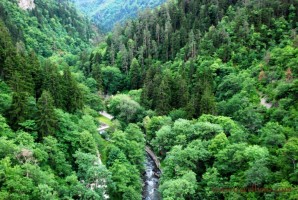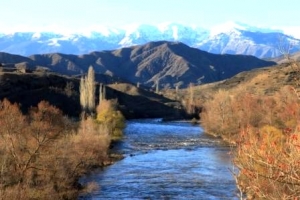 |
Mtirala National Park ( meaning “to cry”) is a protected area in Adjara region, Georgia. Covering approximately 15,698 hectares (38,790 acres) in the western Lesser Caucasus, it is situated between the Black Sea and the Adjara Mountains. It also adjoins Kintrishi Protected Areas. The park’s “pristine Colchic humid broad-leaved and mixed forests” include sweet chestnut and Oriental beech woods with pontic rhododendron, cherry laurel and Colcic box understories and a variety of lianas. Fauna recorded are Brown bear, Roe deer, and Wild boar, while avifauna includes Booted eagle, Eagle owl and Golden oriole. Amphibians inhabiting the park include Caucasian salamander, Caucasian toad, Eurasian mash frog and Caucasian viper. Mount Mtirala is one of the most humid areas in the country. The name Mtirala (meaning “to cry”) is derived from the 4,520 millimetres (178 in) annual rainfall, making it one of the wettest areas.
|
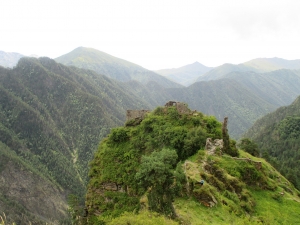 |
The Tusheti National Park in East Georgia is one of the eight new Protected Areas. Global Environment Facility (GEF) and the World Bank were part of this approval process under the “Georgia – Protected Areas Development Project.” Plants conserved in the park are pine groves and birch groves. The key faunal species in the park are Anatolian leopard, bear, chamois, falcon, Golden Eagle, lammergeier, lynx, mountain goat, wild goat, and wolf. The park was named one of the “12 best places you’ve never heard of” by BudgetTravel in 2011 not only for its rich biodiversity but also for its aesthetic terrain, hamlets, old defense towers, cuisine, and folk culture. The park has an approved land area of 83 hectares, which lies within an elevation range of 900–4,800 metres. The main functions of the park administration are to provide protection and conserve the flora and fauna of the park concurrently supporting the interests of the 50 nomadic communities, and achieving conservation of the linked historic monuments; and also to encourage eco-tourism. For the endangered Wild Goat the park is the only intact habitat. To protect this species from poaching and enable its viewing in the park by visitors, the Centre for Biodiversity Conservation & Research (NACRES), an IUCN member, carried out a pilot project titled “viewing potential” by monitoring the “risks and benefits to conservation and the cost of setting up and operation of wildlife viewing trails.”
|
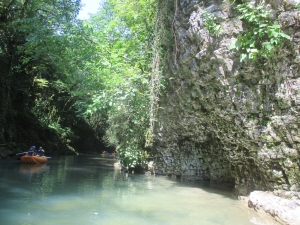 |
The Martvili Canyons in Samegrelo-Zemo Svaneti region are named after the nearby town of Martvili. The spectacular canyons, caves and waterfalls were formed over time by the Abasha River and feature beautiful green and blue colors. Its a natural wonder in the Samegrelo region of Georgia. Also called the Gachedili Canyon, it is about a 45 minute drive from the city of Kutaisi in West Georgia. The incredible natural beauty of the secluded coves and azure-green water of the stream as it flows through the hidden canyon appealed to adventurers streaming into the Caucasus from Europe. Thus, the site became overrun by locals and tourists and became unsafe as daredevils jumped from waterfalls, went swimming in high water, and or went spelunking or river scuba-diving without proper equipment. Small streams running through the limestone near the town of Martvili have carved a series of spectacular caves and canyons. Some are accessible by raft, others have boardwalks built inside. Experience the natural wonders of Georgia!
|
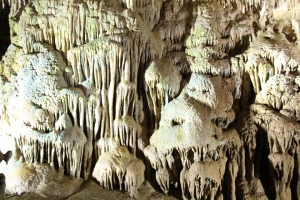 |
Prometheus cave area aroud Kutaisi is considered one of the oldest in the world and was left untouched for a very long time, so that it could preserve the ancient plants and landscapes. Prometheus cave is one of the biggest and most beautiful cave in Europe. Discovered in Imereti region in 1984, Prometheus Cave is one of Georgia’s natural wonders providing visitors with breathtaking examples of stalactites, stalagmites, curtains, petrified waterfalls, cave pearls, underground rivers, and lakes. Legendary Prometheus who under Greek mythology stole fire from Gods was chained to Khvamli Mountain which can be seen from Prometheus Cave, one of the most colorful place in Georgia. Here you can observe stalactites, stalagmites, underground river and lakes, nice 1.2km walk in mysterious and cool atmosphere and short boat trip if interested.
|
|
|
|
|

